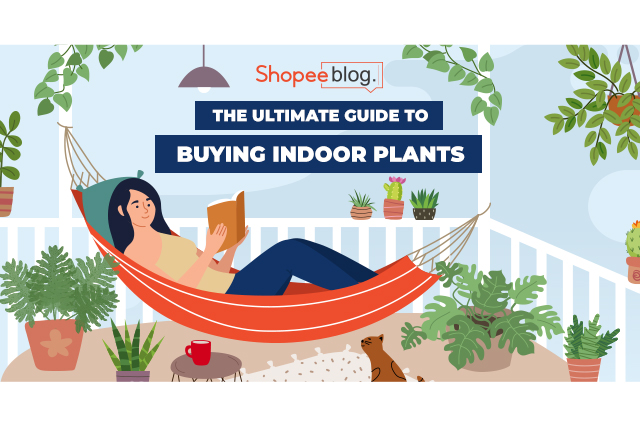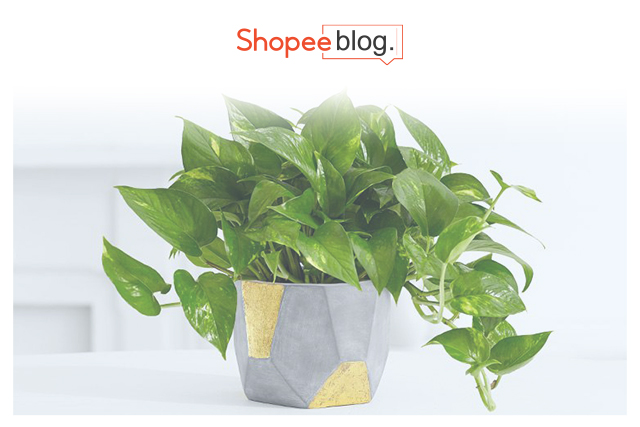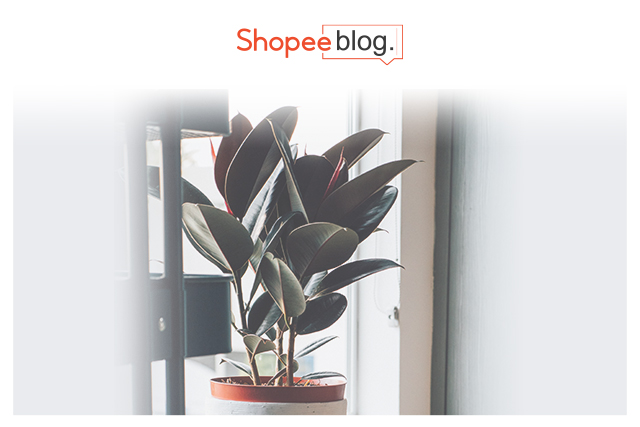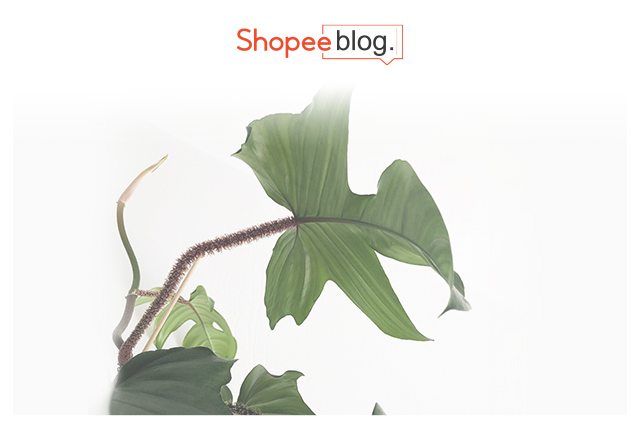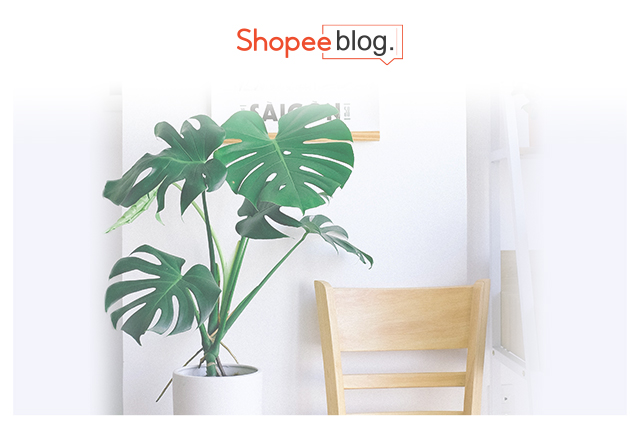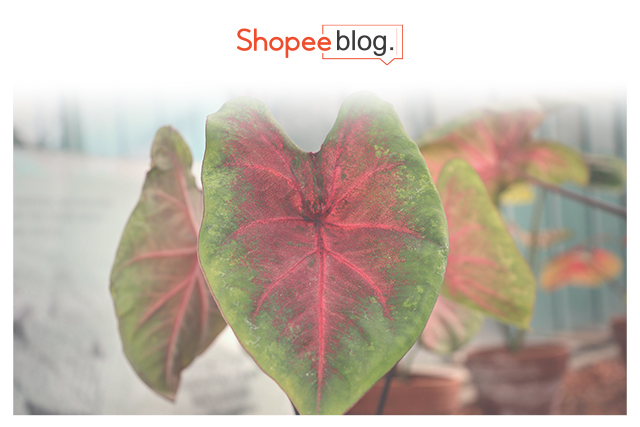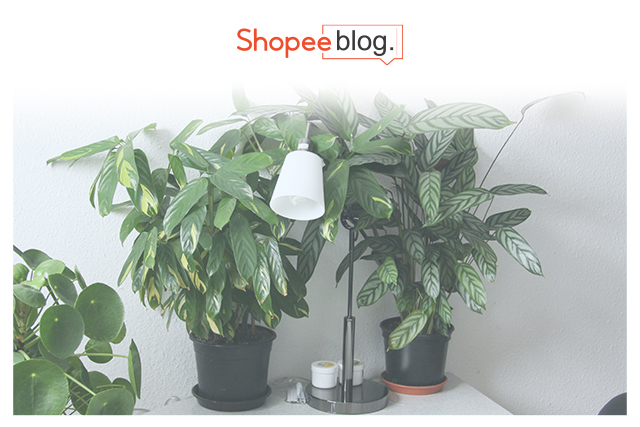Do you want to be a plant parent? Now is the perfect time to become one! Indoor plants don’t just spruce up your place and satisfy your aesthetic needs. They are also great alternatives for natural air purifiers! To top that off, studies have shown that having indoor plants lower one’s stress levels, improves concentration, and can easily improve your mood. In a nutshell, it will simply enhance your life. But, caring for an indoor plant may be challenging for some. Fret not, because listed below are things to consider when buying an indoor plant to make sure that it survives and thrives beautifully indoors. Keep reading to also find out which are the best indoor plants for every care level. From easy to expert care levels, you’ll be able to narrow down which indoor plants to buy!
5 Things to Consider When Buying an Indoor Plant
1. House space and plant size
Consider the amount of space that you have at home or in your apartment where you can put your new plant baby. If you don’t have that big of a space to put your indoor plant in, then you shouldn’t get one that grows too big. Some plants grow up to ten feet tall! If you want a plant that grows up to that size, you need to have the space to properly accommodate it. Otherwise, you can get plants that take up a small amount of space, like succulents, they spruce up your place all the same. Make sure that you give your plants enough space for them to thrive.
2. Sunlight
Do you have enough sunlight that comes in through your windows? A balcony or outside space where you can put your plants for them to get the amount of sunlight they need? If you live in an apartment, it’s very crucial that you have windows where enough sunlight comes in for your plants to survive. If you don’t get a lot of sunlight during the day in your apartment, it would be best to buy low light indoor plants. Every plant needs sunlight, though they vary in amount. Other plants love sunlight while others, not so much. Get a plant whose sunlight needs you can satisfy.
You’ve probably heard of “bright, direct sunlight” and “bright, indirect sunlight”. Do you know the difference between the two? Well, for plants who need bright direct sunlight, you need to put them in a spot where they get direct sun rays. On the other hand, for plants who need bright indirect sunlight, you need to put them in a place where the plant has a good view (as wide as possible) of the sky all day long. There should be no direct sun rays on your plant. During summer, you have to be careful of the afternoon sun because it may burn your plant if the sun rays are too much for the plant to bear. Also take note that humans measure the brightness of sunlight very differently from plants. To make sure that your plants are getting the right amount of sunlight, you can use a light measuring tool! There are many apps on your phone that you can download to help you do that.
3. Humidity and Temperature
Humidity is good for tropical plants. If you use an aircon at home, you have to take note that air conditioning dries out the air, which often results in low humidity. Indoor plants in low humidity will require more water because they lose water quickly. Mist these plants every day. But misting can often lead to foliar diseases. What you can do is to group your plants together so they will bounce off on each other’s humidity.
Air conditioning also causes your plant’s soil to dry out slowly. The temperature indoors directly affects the growth and quality of your plants. The ideal average temperature that most indoor plants thrive in best is 18-24 degrees Celsius in the morning and 15-20 degrees Celsius at night. Indoor plants can tolerate temperatures that are a little above or below this range. However, they don’t like sudden drops in temperature and it’s best to not let them stay in cold temperatures for a lengthy period.
4. Pet-friendly
There are some indoor plants that are poisonous for pets and humans when ingested. If you have pets or children at home, it’s important to get pet-friendly indoor plants. Make sure that the indoor plant you get isn’t poisonous in the possible event that they may ingest it. When ingested, it can cause vomiting, nausea, and swelling of the mouth. Some plants that are poisonous when ingested are the peace lily, philodendron, and the dumb cane plant. You can buy a plant stand or plant shelves to keep any poisonous plants out of reach from your children and pets.
5. Care level
Is this your first time as a plant parent? Great! You will surely enjoy this journey. But make sure you get “beginner plants” which aren’t high maintenance just to get your hands dirty first. This will help you learn the basics and get experience with properly taking care of your plant baby. If you’re a pro at it, challenge yourself into caring for plants that are high maintenance!
Best Indoor Plants for Every Care Level
1. Easy Care Level
Credits: Fabian Stroobants / Pexels
Snake plant – Definitely one of the easiest indoor plants to care for. It’s very low maintenance wherein you only have to water it once the soil is completely dry. Avoid wetting the leaves whenever you water your snake plants. They love bright, indirect light but can also thrive in shady corners in your home. This plant is very forgiving, so it’s perfect for beginners!
Credits: ProFlowers / Flickr
Golden Pothos – This plant is one of the easiest to care for air purifying plants. It loves bright, indirect light. You can tell if it’s getting too much sunlight if its leaves start to turn pale. Pothos loves their soil dry so you don’t have to water it every single day.
Credits: Abel Y Costa / Unsplash
Spider plant – You can put this plant in a hanging planter to accentuate its curved leaves. It’s easy to care for! It requires bright, indirect sunlight and you only have to water it from time to time.
Credits: Ylanite Koppens / Pexels
Succulents – These are very easy to maintain. You can’t go wrong with it! Just make sure that you place it in a spot where it can get direct sunlight for at least three hours daily. Succulents require only minimal watering, ideally once a week.
2. Intermediate Care Level
Credits: Mike Marquez / Unsplash
Rubber plant – This is one of the best natural air purifiers among all the indoor plants. It requires bright, indirect light. Rubber plants only need watering when their soil is dry.
Credits: Hannah C / Unsplash
Philodendron – Requires moderate waterings and indirect sunlight. This plant may not be easy to care for but, its leaves will tell you exactly what it needs! If the leaves are starting to droop, it means you’re not giving it the right amount of water. If the leaves start to turn yellow, you’re giving it too much light. When it’s not getting the right amount of light, its leaves will become sparse. Just observe it closely and you’ll be able to care for it properly! Note that this plant is poisonous to humans and pets when ingested, so be careful. This makes a great office plant which can help make your office feel plush.
Credits: Huy Phan / Pexels
Monstera Deliciosa – This plant is native to Central American rainforests. To mimic this environment, the monstera deliciosa requires filtered, indirect sunlight. If its leaves start to turn yellow or scorch, it means that the sunlight is too bright and direct. It requires weekly watering. Make sure that the soil isn’t too moist or wet, otherwise it will result in root rot.
3. Expert Care Level
Credits: Oom Endro / Pixabay
Gardenia plant – If you love gardenia flowers, then getting a gardenia plant for your home is a definite must! However, it needs 6-8 hours of bright, direct sunlight everyday. It may be challenging to care for, but it will definitely be worth it once the flowers bloom!
Credits: GAIMARD / Pixabay
Caladium – This plant is an outdoor plant yet you can have it indoors too! Although, it may be challenging to do so. It’s essential that you mimic a tropical environment to ensure that it will grow and thrive. It requires medium light and high humidity when it’s hot indoors.
Credits: Maja Dumat / Flickr
Calathea – With its colorful leaves, this plant is attractive and easy to maintain! You just have to make sure that the soil is moist all the time – not too dry or wet. This plant thrives best in indirect sunlight. If you put it in direct sunlight, its leaves will lose its color. If the leaves are starting to drop, it means that your plant is thirsty so give it a drink!
What are you waiting for? It’s time for you to become a plant parent! Don’t be intimidated by all the factors you have to consider. Just bear them in mind because these are essential to ensure the growth of your plant. Take the leap! Buy a plant, give it all the love and attention you can give, and it will surely thrive. If you’re already a plant parent, add more to your plant family! Being a plant parent is challenging but even more enjoyable and definitely rewarding. If you want to take it up a notch, try making your own garden by planting vegetable seeds! With the help of gardening tools, you’ll be able to set-up your own garden at home in no time.

